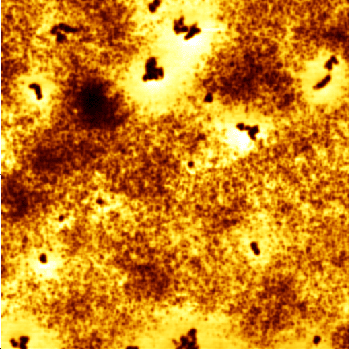The factsAmerica generates 245 million tons of municipal solid waste every year, a figure that continues to grow.
The problemLandfills are filling up, land is no longer easily available, and toxic chemicals leach into the soil and water table. In addition, landfills and incineration are becoming regulatory, socially and environmentally unacceptable.
The technology that may cure the problemPlasma gasification (PG) -- Turns trash into clean energy and produces salable fuels, valuable metals and silicates, and chemicals for plastics. It is capable of breaking down almost any material--right down to its constituent elements--except for nuclear waste.
One of the companies with the potential solution is the Startech Environmental Corporation (www.startech.net -- OTC Bulletin Board: STHK -- http://finance.yahoo.com/q?s=sthk.ob&d=t) (the remainder of this article is about Startech and their process, unless otherwise stated)
How it worksWaste materials, including hazardous and nonhazardous solids, liquids and gases, are fed into a chamber (the Plasma Converter) where they are subjected to a plasma arc. “The arc in the plasma plume within the vessel can be as high as 30,000 degrees Fahrenheit ... three times hotter than the surface of the Sun. When waste materials are subjected to the intensity of the energy transfer within the vessel, the excitation of the wastes' molecular bonds is so great that the waste materials' molecules break apart into their elemental components (atoms). It is the absorption of this energy by the waste material that forces the waste destruction and elemental dissociation.” (1)
By-products are synthetic gas (“syngas” AKA: Plasma Converted Gas or PCG) and “an obsidian-like stone, which is non-toxic and non-leachable” that can be used as a raw material for other products for the construction and abrasives industries.
The process also generates more electricity that it consumes; the PCG can be used to generate steam that in turn can drive a generator or turbine that produces electricity, or to make hydrogen or methanol.
Some of the waste stream products that may benefit the most (those that are the hardest or costliest to dispose of or are the most toxic [*]) include:
Medical waste
Outdated pharmaceuticals
PCBs
Chemical agents
Hazardous incinerator ash
Various biological wastes
Sludges
Paints and solvents
Electronic industry waste
Contaminated soils
Asbestos
[* current disposal costs are approximately $900 to $2,000 per ton, and rising]
(2)
Who else has similar technology?Renewable Energy Technologies (www.cogeneration.net/plasma_gasification.htm)
Geoplasma (www.geoplasma.com)
Recovered Energy (www.recoveredenergy.com)
PyroGenesis (www.pyrogenesis.com)
EnviroArc (www.enviroarc.com)
Plasco (www.plascoenergygroup.com)
Safe Waste And Power (www.safewasteandpower.com)
and others
Who is funding it or has invested in it? Among others:Cornell Capital Partners, L.P. (Sept. 19, 2005: “up to $20 million of funding in the form of a Standby Equity Distribution Agreement (SEDA) to be drawn down incrementally over a 24-month period at Startech's sole discretion.”)
The Department of Energy (DOE) (Aug. 3, 2005: “$500,000 for further demonstrations of the Company's StarCell Hydrogen system … to demonstrate the production of hydrogen from Municipal Solid Waste.”)
MarketsMunicipalities that are running out of landfill space
Businesses and municipalities that need to comply with existing and future environmental regulations regarding landfills and incineration
Businesses looking for alternatives to fossil fuels
Municipalities looking for ways to meet power needs
Potential drawbacksThere has been concern by environmental groups that the “obsidian-like stone” may contain heavy metals that could leach into groundwater. Startech states that “No hazardous organisms or agents that go into the Plasma vessel survive” (3) and that the “stone” is non-toxic and non-leachable.
The up-front costs of up to hundreds of millions of dollars will be hard for many municipalities to swallow, despite the advantages inherent in the technology.
David J. Phillips (10Q Detective) sounds several cautionary notes, here http://smallcap.seekingalpha.com/article/27196
Upsides (according to Startech)
Generates more electricity than it consumes
Eliminates the need for new landfills and incinerators
Could empty out existing landfills and return the land to other uses
Could also process bio-hazards such as anthrax
The costA $250 million Startech Plasma Converter can handle approximately 2,000 tons of waste per day, an amount that is roughly what a city of 1 million people produces. It is estimated that the cost could be recouped in around 10 years, given today’s dumping fees. And when you consider that the system is capable of generating more electricity that it consumes, as well as the PCG, the payoff could come much sooner.
What may it replace? (Who will it put out of a job or cost money?)
Landfill operators who will loose revenues.
What may it enable?It appears that the Startech “Starcell” has promise (the Company's hydrogen-selective membrane filter that separates hydrogen from the PCG). As there are no harmful by-products, and hydrogen can be produced from traditional waste streams, this technology may be one of several that helps enable a hydrogen economy.
Who is using it now, or will be in the near future?The City of Chitre, Panama (a 200 ton per day PC facility)
The City of David, Panama (a 200 ton per day PC facility)
The City of Las Tablas, Panama (a 200 ton per day PC facility)
[all three intended for “processing municipal solid waste and producing ‘green electrical power.’”]
GlobalTech Environmental Corporation, a Chinese corporation (a 20,000 pounds per day PC facility, intended for processing PCBs Polychlorinated Byphenyls) and POPs (Persistent Organic Pollutants))
Future Fuels, Inc., (FFI) (a 100 ton per day PC facility, for a Waste-to-Ethanol Facility)
Mihama Incorporated (a 5 ton per day PC facility, for PCBs and PCB contaminated materials)
PlasTech Solutions, Ltd., Australia. (a 10 ton per day PC facility, for industrial and institutional wastes)
Ercole Marelli HiTech srl of Milan, Italy (contracts for “more than $40 million”)
And many more – see www.prnewswire.com/gh/cnoc/comp/113537.html and the press from the other companies listed above.
Disclaimer: I am not a stock analyst and this is not a suggestion to buy or sell stock in any of the companies mentioned, nor do I own stock in any of them.Note: this is one of many of the types of reports we do for our clients at access-nanotechnology.com
(1) http://www.startech.net/plasma.html
(2) http://www.startech.net/overview.html
(3) http://www.startech.net/faqs.html










